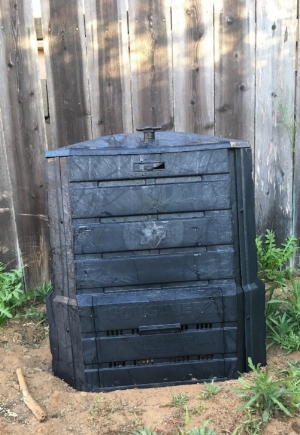How to Take Your Home-based Green Business One Step Up
"If a man walks in the woods for love of them half of each day, he is in danger of being regarded as a loafer. But if he spends his days as a speculator, shearing off those woods and making the earth bald before her time, he is deemed an industrious and enterprising citizen." Henry David Thoreau
About a year ago I published a blog post titled Translation Home-based Businesses Can Be One of the Greenest Enterprises Out There, which talked about home-based green businesses in San Diego, California and what, as entrepreneurs, we could do to have a great impact on our immediate environment. Self-employed business owners should take pride in all the actions they take toward improving their communities and making life more sustainable for everyone. I would like to share with you how Marco Díaz Translations, over the past year, has taken its commitment to a greener environment one step up. Success is also about the imprint a business leaves in the world.
Some background: The water situation in California and global warming as a looming threat to the world
In 2017, California has experienced record wet conditions following five consecutive years of drought. Even though Gov. Jerry Brown declared an end to California's historic drought, lifting emergency orders, it's not hard to surmise that the next drought could be around the corner. This is why I would like to remind businesses and residents of California that water conservation must remain a way of life.
Since the United States has unfortunately withdrawn from the Paris Accords, as individuals or businesses we must take every necessary step to ensure we are contributing to cut greenhouse-gas emissions. In the above mentioned blog post, I also discussed how using alternative means of transportation could help reduce our daily carbon emissions. In this post I would like to discuss another way in which we could address global climate change by decreasing the amount of greenhouse emissions: Composting! If you would like to take your home-based green business to another level, read the following 3 steps to learn about composting and how to implement a system at home.
1. What is composting?
It is mother nature's way of recycling by transforming natural nutrients of waste organic matter into usable nutrition for all plants. A composter turns kitchen and yard waste into dark, nutrient-rich, earth smelling soil.
2. How do I install a composter at home?
There are many kinds of composters. I purchased a classic composter, which is quite affordable. This is how it looks once it is installed in the backyard:
Spread approximately 4" of carbon materials such as twigs, straw or dry leaves over the bottom. If these aren't readily available you can rake up dry materials from under the hedges, shrubs or the flower garden. Over this spread a couple of shovel fulls of earth from your garden. Then start adding your kitchen waste or cuttings from the garden. It usually takes a couple of months for the soil to start becoming "composted", so just keep mixing it up and adding more waste everyday.
3. What and how do I compost?
Amazingly, one third of your household garbage can be composted! Here is a list of things you do and do not compost:
Do
- Yard waste: leaves, dry grass, weeds, garden plants, and soft plant stems
- Kitchen waste: fruit and vegetable matter, egg shells (crushed), tea bags, coffee grounds, and filters
Don't
- Yard waste: wet grass
- Kitchen waste: meat, fats, bones, fish, dairy products, and cooking oil
the compost process requires
- organic material
- air
- moisture
- soil (optional)
Make sure to chop waste into smaller bits. To accelerate composting, begin with a layer of nutrient-rich material such as your own finished compost, bone meal or a commercial starter. Continue to layer it until composter is full.
How about you, my dear reader? What contribution have you made to the environment or your community? Share with us!


